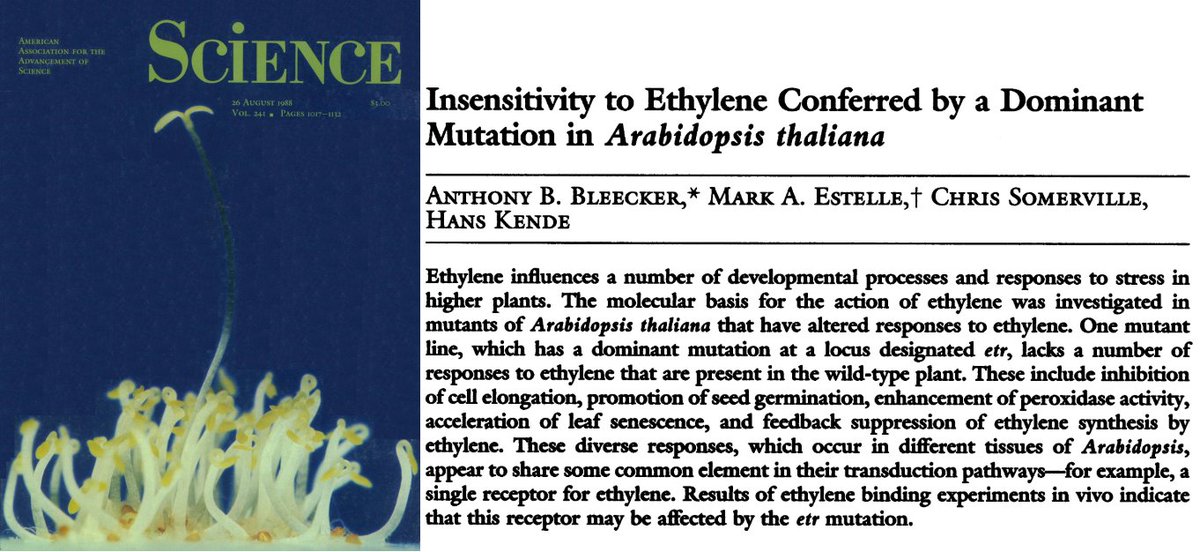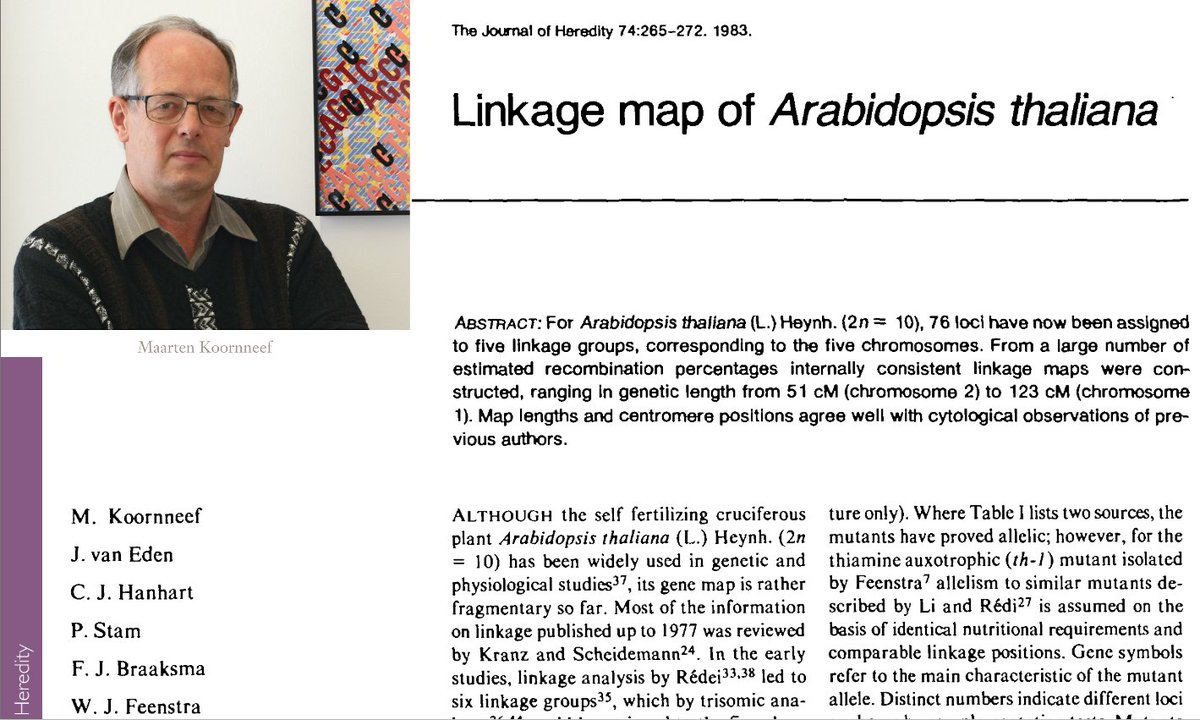#PlantScienceClassics #17: The Mildew Resistance Locus O (MLO). 80 years ago Rudolf Freisleben & Alfred Lein created the first powdery mildew resistant barley plant. 30yrs ago the gene was mapped, 25yrs ago cloned-yet it's mode of action remains a mystery. doi.org/10.1007/BF0148… 

Powdery mildew is a fungal disease of many crop plants, most prominently maybe barley and wheat, where outbreaks can reduce grain quality & yield, and ruin complete harvests. Visible are the fluffy patches formed by the fungus (Blumeria graminis f. sp. hordei). 

Freisleben used radiation-induced mutagenesis to create the barley 𝘮𝘭𝘰 mutant, which showed full resistant to this pathogen. A massive agricultural breakthrough!
See also Classic #2, to read about how Emmy Stein has developed this technique in 1921:
See also Classic #2, to read about how Emmy Stein has developed this technique in 1921:
https://twitter.com/somssichm/status/1442003372060471302
In the following years, natural 𝘮𝘭𝘰 alleles were also identified in wild barley accessions,&such mutants (natural & induced) are now widely used in agriculture. Ironically, would an 𝘮𝘭𝘰 mutation be created via CRISPR today,the plant would be banned as GMO in many countries. 

Curiously though, the mode of action of MLO could no be deciphered in the following decades. Then, @HollricherKarin, Rainer Büschges & colleagues, in a cooperation between @mpipz_cologne and @TheSainsburyLab, finally managed to map (1991) and clone (1997) the barley 𝘔𝘓𝘖 gene. 

This gave new hope that the functional mechanism of MLO will finally be uncovered.Even more so,when Arabidopsis 𝘮𝘭𝘰 mutants were found to be powdery mildew resistant too&the whole arsenal of molecular biology tools existing for this model plant became available to researchers. 

However, progress still remained slow. We now know that MLO is a 7-transmembrane protein, with a calmodulin-interacting calcium-binding domain on its carboxy-terminus, which is required for susceptibility to the fungus. Further, in 𝘮𝘭𝘰 mutants, defense compounds accumulate,...
... cell wall appositions are increased, ROS is overproduced, fungus-induced cell death is suppressed, and defense gene expression is elevated. But 𝐇𝐎𝐖 exactly MLO acts on all these pathways is still unknown.
And interestingly,mutation of 𝘮𝘭𝘰 seems to confer durable & broad-spectrum resistance to powdery mildew pretty much any plant that carries such a gene,& thus, there are now many powdery mildew-resistant crop varieties out there. So 𝘮𝘭𝘰 seems to indeed be a universal weapon. 

It is thus all the more surprising, that we still don't know what the actual function of MLO in the plant immune system is; which pathways it is involved in, what the protein's biochemical activity is, or why it appears to be required for fungal pathogenesis.
Following his 1942 publication, Rudolf Freisleben was promoted to professor by @UniHalle & immediately received an offer to join @Uni_WUE. Unfortunately, before he could accept that offer, he died of an infection he acquired while serving in the army during the second world war.
For more on MLO and its history, see also: 'mlo -Based Resistance: An Apparently Universal “Weapon” to Defeat Powdery Mildew Disease' by @stefan_kusch doi.org/10.1094/MPMI-1… and 'Unmasking Mildew Resistance Locus O' doi.org/10.1016/j.tpla… by @CatherineJacott
• • •
Missing some Tweet in this thread? You can try to
force a refresh



















